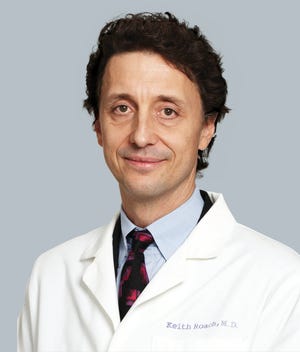Dr. Roach: How to combat risk of heart failure with atrial fibrillation
Dear Dr. Roach: I am an 88-year-old female in relatively good health. A year and a half ago, I did experience atrial fibrilliation and had two cardioversions. (The first was good for a year; the second lasted only three months.) The diagnosis is paroxysmal AFib.
My cardiologist has recommended a third cardioversion, which would require taking 400 mg of Multaq twice a day prior to the procedure, and remaining on this medication for the rest of my life (presuming the procedure is successful; if not, a stronger medication would be required). Or — my choice — I can do nothing, as long as I can tolerate these episodes of fatigue, shortness of breath and palpitations. At the present time, I must be in “remission,” as I am not experiencing any symptoms. (However, when I take an EKG test, it always shows I have AFib.) My blood pressure, cholesterol, triglycerides, etc., are all at good levels. My question: In your opinion, if I choose to “tolerate” intermittent episodes of AFib, in the long run, would this not eventually lead to the development of congestive heart failure?
— S.S.
Dear S.S.: The major concern here, apart from reducing symptoms (which you don’t normally have), is the development of a stroke, so every person with atrial fibrillation is considered for anticoagulation. There are other concerns, including development of heart failure. People with atrial fibrillation who have frequent, fast heart rates are at risk for developing heart failure. “Paroxysmal” AFib comes and goes: There is about the same risk of a stroke with paroxysmal AFib as with continuous AFib.
Apart from medication to reduce the risk of stroke, there are two major strategies called “rate control” and “rhythm control.” Cardioversion (using electricity to break the atrial fibrillation cycle and return the heart to normal rhythm), followed by treatment with anti-arrhythmic drugs like dronaderone (Multaq), is the rhythm control strategy. Rhythm control is generally preferred in people at higher risk for heart disease, especially if they have not had AFib for more than a year. People with symptoms, or a history of heart failure, generally do well with a rhythm control strategy. Otherwise, a rate control strategy is reasonable. As long as the rate is controlled properly (which may require you to wear a device to monitor your heart rate for a period of days or weeks), you are at low risk for developing heart failure.
It’s very important to find out how often these episodes of palpitations are happening and how fast your heart rate is. Medications can be used to slow the heart rate down (the rate control strategy), but occasionally, people continue to have symptomatic episodes, despite medication for slowing down the heart rate, in which case the rhythm control strategy is recommended.
There are still other options. One is a procedure to destroy or isolate the part of the heart that is responsible for the atrial fibrillation, such as a “catheter ablation” procedure. Some people will need a pacemaker after these types of procedures. The Watchman device reduces stroke risk, but does not affect rhythm or rate.
Readers may email questions to ToYourGoodHealth@med.cornell.edu.
